SUZUKI WAGON R: Mr. Big and Practical
The Suzuki Wagon R made a name for itself on this very premise: unparalleled space on the inside. The tall boy design was not a huge hit, but functionality beat out form, making it a strong contender in the segment as well as a frontrunner for the title of the most practical hatchback. The third-gen Suzuki Wagon-R now looks to fill the boxes it missed out on in the previous generations.
Exterior
The third-gen Wagon R retains the tall-boy proportions of its predecessors but hones the demeanor of an improved car. For one thing, it is built on the latest Heartec platform, the same used by the Baleno, Ciaz, Swift and Ignis. This is a step forward in terms of safety, improved dynamics, cabin space, and weight from the A platform which the Wagon R previously used.
Compared to the outgoing model, the new Maruti Suzuki Wagon R is 56mm longer, a massive 125mm wider and is 35mm longer in its wheelbase. Despite the increase in the dimensions, the weight has been slashed by 65kgs.
Along with more size, the new Wagon R gets more style. Negating the previously boxy design, to some extent, is a bulkier and rounded-off nose. More styling elements come in the form of the arrow-shaped headlights, and sporty chin. On the profile of the Wagon R you get a well sculpted shoulder line and proper wheel arches. The black plaque that runs from the C-pillar to the tailgate gives it a ‘floating roof’ effect. Overall, the Wagon R remains a Wagon R. It’s still tall, but the larger proportions give it a more toned visual. And it really is big!
Interior
The space inside the cabin has always been the party piece of the Wagon R, and it remains so in the newer version. To say there is plenty of headroom and legroom would be an understatement, and that is coming from someone well over 6 feet tall. Having said that, shorter drivers might be slightly miffed to discover that the seats aren’t height-adjustable. And, because you are seated far from the windscreen, you might have trouble keeping the bonnet in your field of vision. Nevertheless, the steering is tilt adjustable; you’ll find your perfect position with ease. There’s also space under the front seat for the rear passenger to rest his/her feet comfortably, and that adds to the leg space.
Even with the driving seat set way back, there is plenty of room for the passengers. Now, fold these seats down and there is an astounding amount of space for your luggage. Once again, practical. The new Wagon R’s boot volume is rated at 341 liters, which is even more than that of the Vitara Brezza (328-liter).
The interiors get a light beige and black color scheme, the materials used what you would expect in a budget car. The instrument console has an orange backlight, and there is a large analogue speedometer tachometer, supplemented by a smaller circular unit that reads out the fuel gauge and trip meter readings. You can also get the infotainment system to display the fuel efficiency which might encourage you to change your driving habits.
On the safety front, the Wagon R gets driver airbag as standard. The new Wagon R’s Heartect A platform is also stronger than the platform on which the second-gen Wagon R was developed.
Performance
The Wagon R drives the same way you’d expect it to. It will engage you less and ease you more. This tall boy from Suzuki is powered by a 1.2-liter K12M Petrol Engine that has been mated to a 5-speed manual transmission that makes 81 Bhp and 113 Nm of torque.
The steering is light and provides negligible feedback. The suspension is tuned for a plump cushiony drive and the 835 kg tallboy will wobble and roll about at corners. All this means that you can plan and execute a long road trip, but the Wagon R will feel happier inside the concrete mazes of the city riddled with tarmac.
The steering is a godsend, making navigation on the inner city traffic as easy as skimming butter with a hot knife. The compact dimensions are perfect for novice drivers and will make it easier to maneuver through the narrow urban streets. The power is delivered at a leisurely pace and the car makes sure that you are in control at all times. If we were to nitpick, we would have liked a little more bite on the brakes. In short, this little big boy will let you take the leash and happily trod along… eager to please you at all times.
Verdict
We have to gauge the Wagon R in relation to what it is: a practical, everyday car that is big on space. And it is… a practical, everyday car that is big on space. You can comfortably seat your entire family in it, with room to spare. Got massive luggage to haul? Not a problem for the Wagon R once you fold down the seats. Need to keep running costs in check? The mileage the Wagon R provides is tremendous. Don’t want to look like you’re driving around in a metal box? The NEW Suzuki Wagon R ticks that box too.
It has come far from the designs of the old. There are significant design elements that make it a car that you can proudly drive around in while also being a sensible purchase. All in all, the Suzuki Wagon R is big on everything that it offers, considering the segment it thrives in.
THE ALL NEW FORD FIGO: Worth your love
Ford Figo of the past are some of the best hatches and we honestly believe they are among the best value for money cars in the Nepali market. This is what we take into the review of the facelifted Ford Figo: significantly high expectations. Does that put the Figo on the back foot? Maybe. But if it DOES live up to our expectations, the Ford Figo will have pulled off something exceptional.
Exterior
The facelift has given the new Figo looks akin to the Ford Figo Aspire. Making up the front fascia is, what Ford calls, a ‘cellular’ design, a flat hexagonal grille with a silver painted mesh and, C shaped fog lamp housings encased in chrome lining.
While the overall looks were appealing, Ford seem to have gone slightly overboard with the use of chrome. Nevertheless, the Ford Figo has updated itself in terms of the exterior design and brings forth a more modern design.
Sadly, the Nepali market will not be getting the Titanium Blu variant whose designs are superior to and sportier than the Titanium variant that tops the Nepali lineup.
Interior
You are cocooned in the charcoal black interiors of the new Figo. Some may say that makes the cabin feel slightly cramped. We disagree. There is plenty of legroom and shoulder room for all occupants. There are piano black finishes on the center console and steering wheel, which makes it feel more premium, and the dials now get a carbon fiber-like finish.
On the safety front, the Ford Figo gets driver and passenger airbags as well as ABS and EBD as standard. Other notable features include the push button start and perimeter alarm in the Titanium variant and remote keyless entry. Figo remains well equipped with auto climate control, power-folding mirrors, an auto-dimming rear-view mirror, auto headlamps, and auto wipers. But, now, you have a much-needed touchscreen, a 7.0-inch unit that is responsive and has a decent user interface.
The seats provide decent cushioning and under-thigh support. You can be assured the Ford Figo will be a good companion on long road trips. Taller passengers will fare better in the front seat, mainly in terms of headroom.
Performance
This is a truly fun car to drive and it keeps reminding you of it every time you rev the engine hard. And boy, is it a rev happy engine! To say the the 1.2 liter three cylinder naturally aspirated petrol engine is peppy would be an understatement. Now, that doesn’t imply that the new Ford Figo is a power plant of a machine; and it doesn’t need to be.
You don’t really get to make the most of the engine at lower revs, but work through the short throws of the 5 speed manual gearbox and you can reap the rewards of the rev happy engine. Power delivery is linear and provides a steady output up till the 6,800rpm redline. Peak power is 96BHP and torque peaks at 120NM.
Moreover, the Figo drives well. The steering is well weighted and provides decent feedback so you feel more in control. It is nimble in traffic and confident in corners. The suspension also takes on potholes with ease, of which there are plenty on our roads.
The Ford Figo inspires you to do things that normal hatchbacks don’t. Yes, you can take your family on family outings, drop your kids to school, and head on to the office in it. But you can also decide to put on your driving shoes and embark on some fun behind the wheels. And by fun, I mean ‘attacking a corner hard and lifting your rear wheel’ fun.
Verdict
A car that can accompany you on your everyday tasks, a car that can actually be fun to drive, a car that you can live with, and a car that you can love. And the new Ford Figo does that by undercutting prices provided by its competitors.
There isn’t a lot more you can ask for from a car. It could have done without the excessive use of chrome, and it would be outstanding if Nepal were to get the sportier Titanium Blu variant. But, for now, when it’s all said and done, we love the new Ford Figo O
Cool for the summer
Summer is here in all its heat and glory, and this is by far one of the hottest we’ve experienced. The rise in temperature isn’t affecting only our planet and all the beings on it, but also your car. For drivers who don’t enjoy intense heat, getting into a car that has been parked in hot weather can feel like being roasted alive, not to mention that it puts serious wear on your car over time. Here are some simple tips to keep your car cool for the summer.
Get your A/C checked
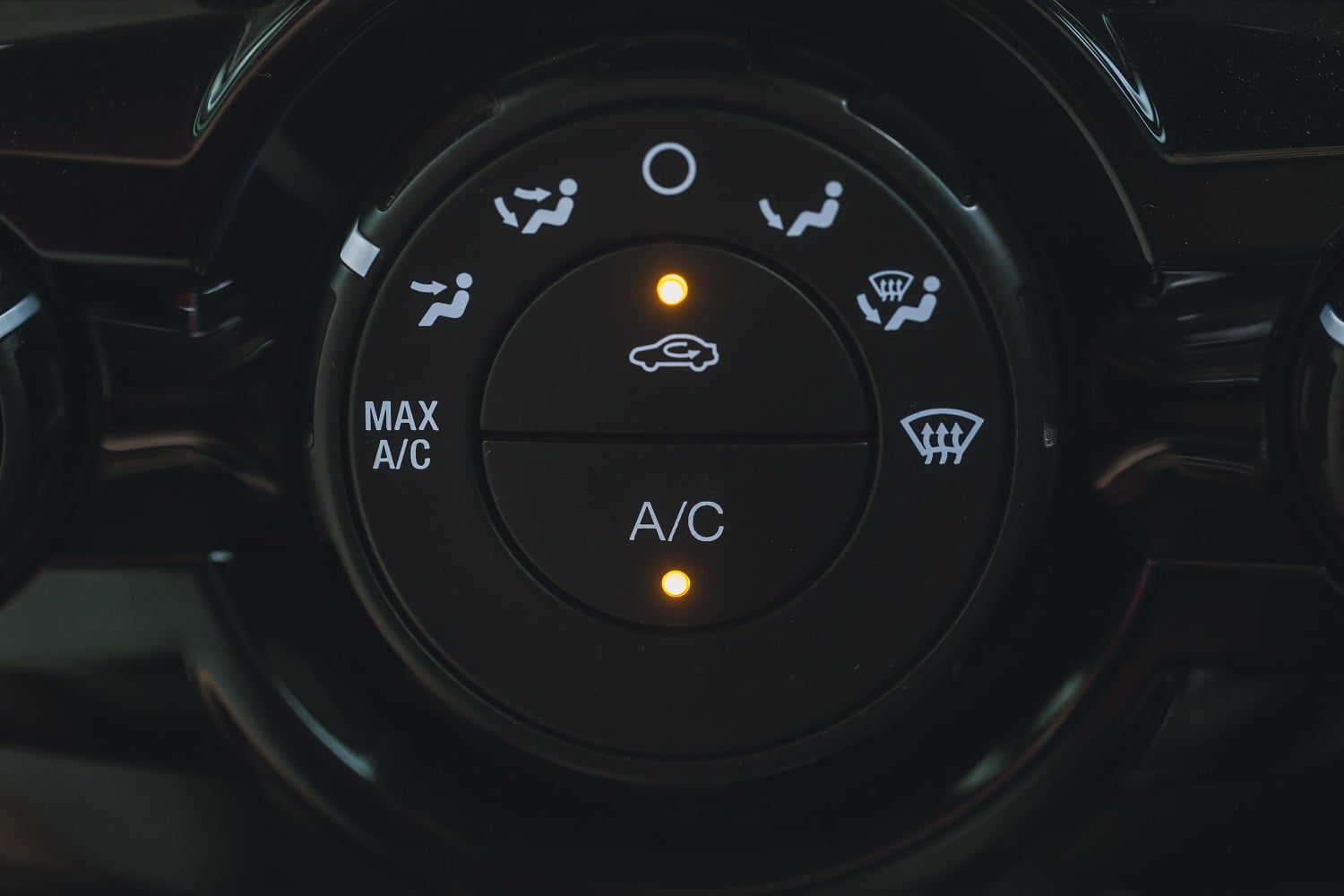
This is essential! You don’t want to spend the next three months driving with the windows open and fill your car with dust while sweating bullets. If you think you might have an issue with your air conditioning, we say get it checked as soon as possible.
Check your filters
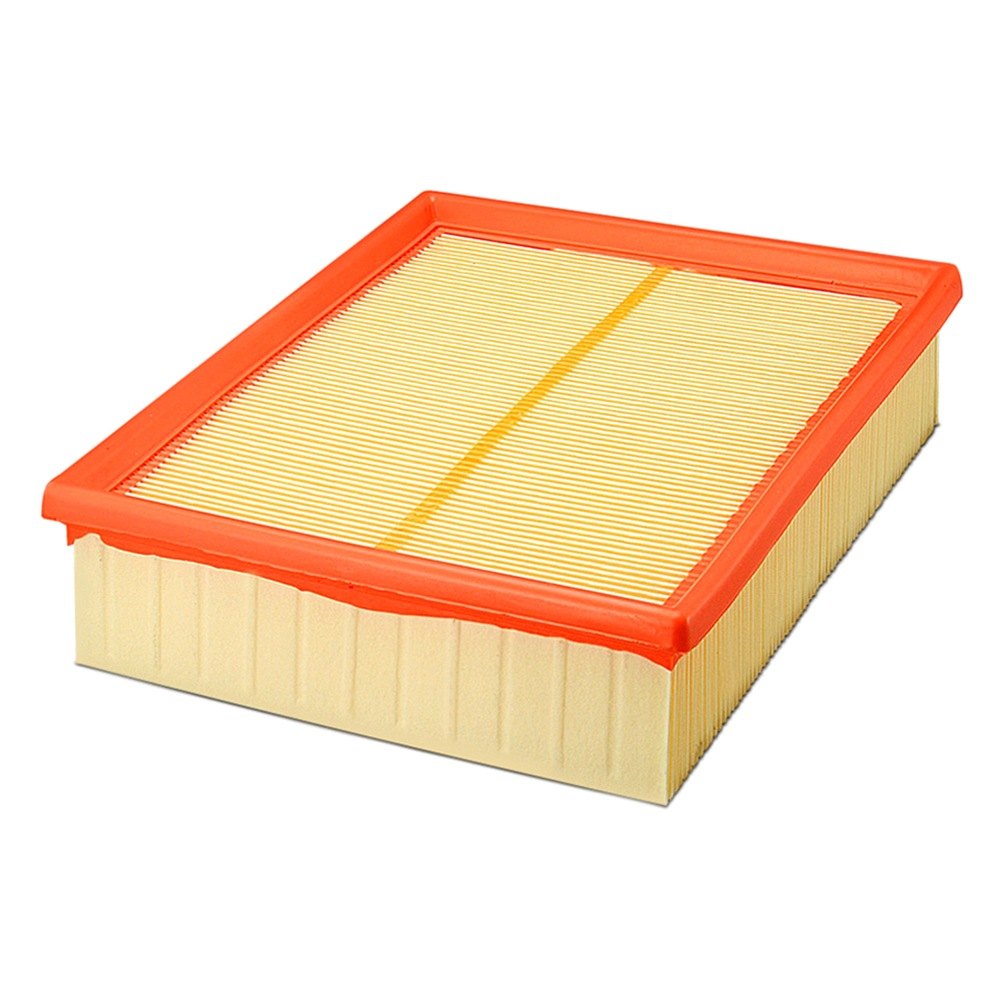
While getting you’re A/C checked you might as well check all your filters as well. When the temperature rises, so does the pollen count. And as more vehicles hit the road, the amount of harmful gases and dust being thrown into the air increases. This can get into your engine and vehicle cabin doing potential damage to both you and your car. So check your vehicle’s engine air filter and cabin air filter, replacing them if necessary.
Use a sunshade or window visor
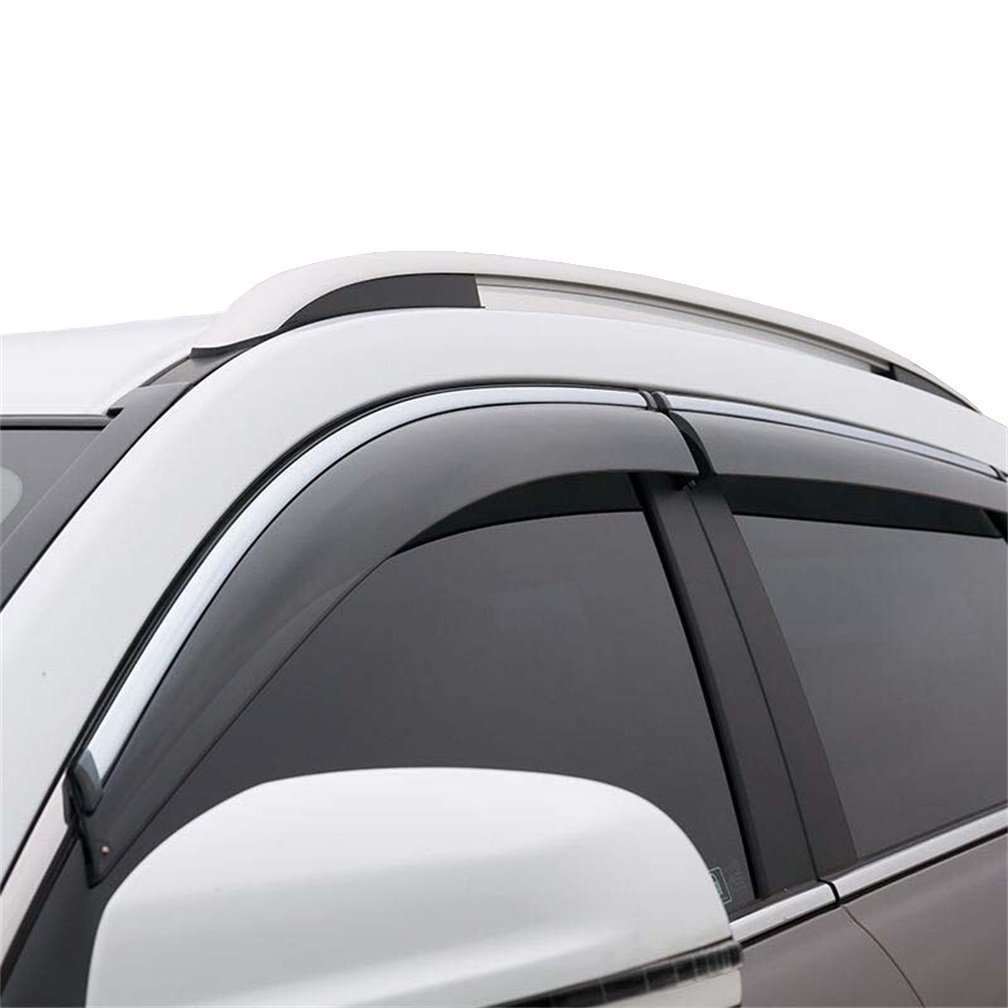
This tried-and-true method of keeping your car cool should be your go-to option to counteract hot interior temps throughout the summer. Put up a sunshade or window visor every time you exit your car for more than a few minutes. Keep it even cooler for long periods by putting a sunshade in your rear window as well.
Use a dash cover
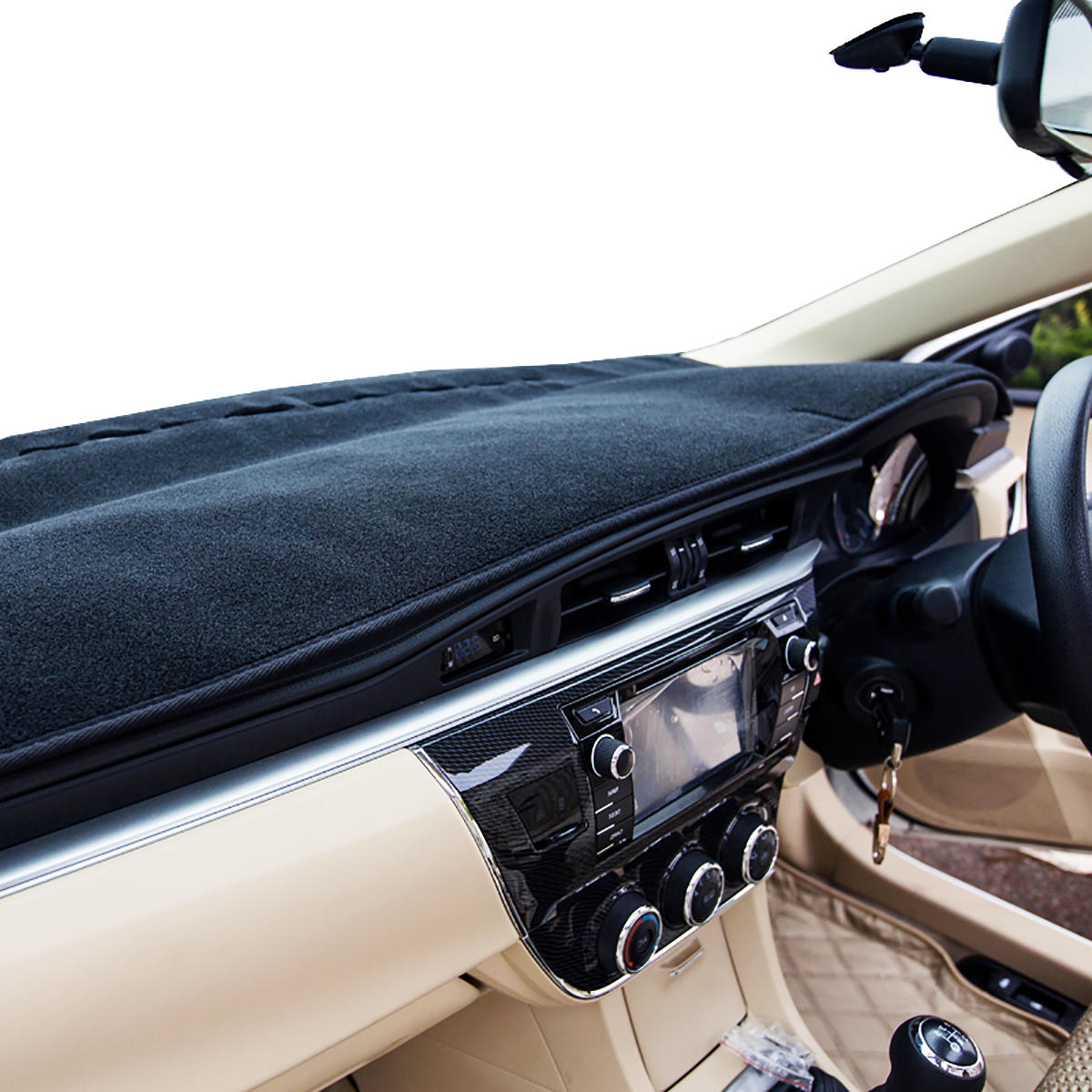
A fabric or upholstered dash cover can go a long way towards making your car’s interior more comfortable. You won’t feel as overwhelmed by the heat if you don’t have to touch hot vinyl surfaces. Dash covers also protect sensitive vinyl from sun damage that can cause cracking and fading.
Cover your steering wheel with a hand towel or a cover
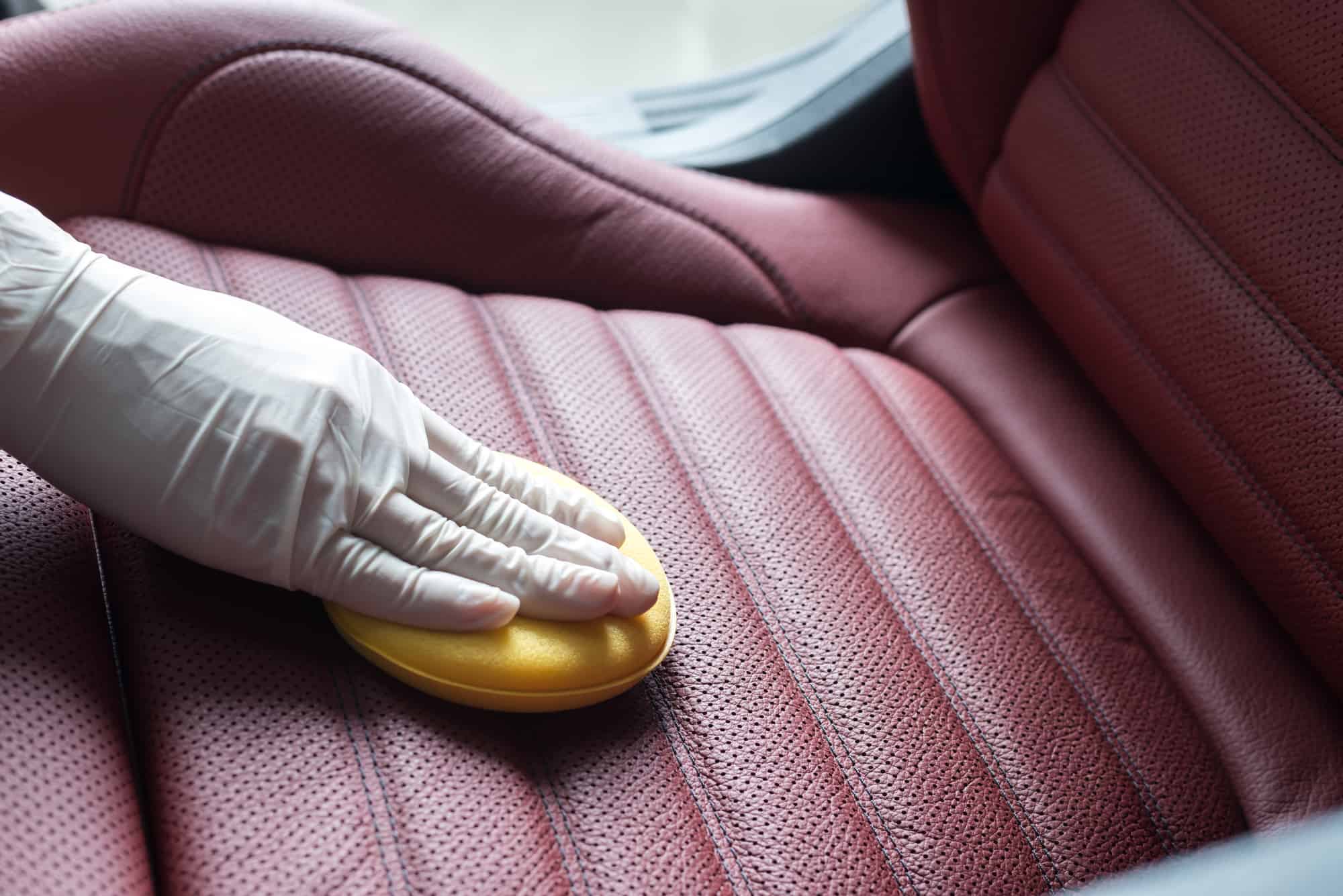
Even if you use a sunshade, it’s a good idea to cover your steering wheel with a small towel or a cover. This will help to keep the contact temperature of your steering wheel down.
Protect your interior and avoid the UV rays
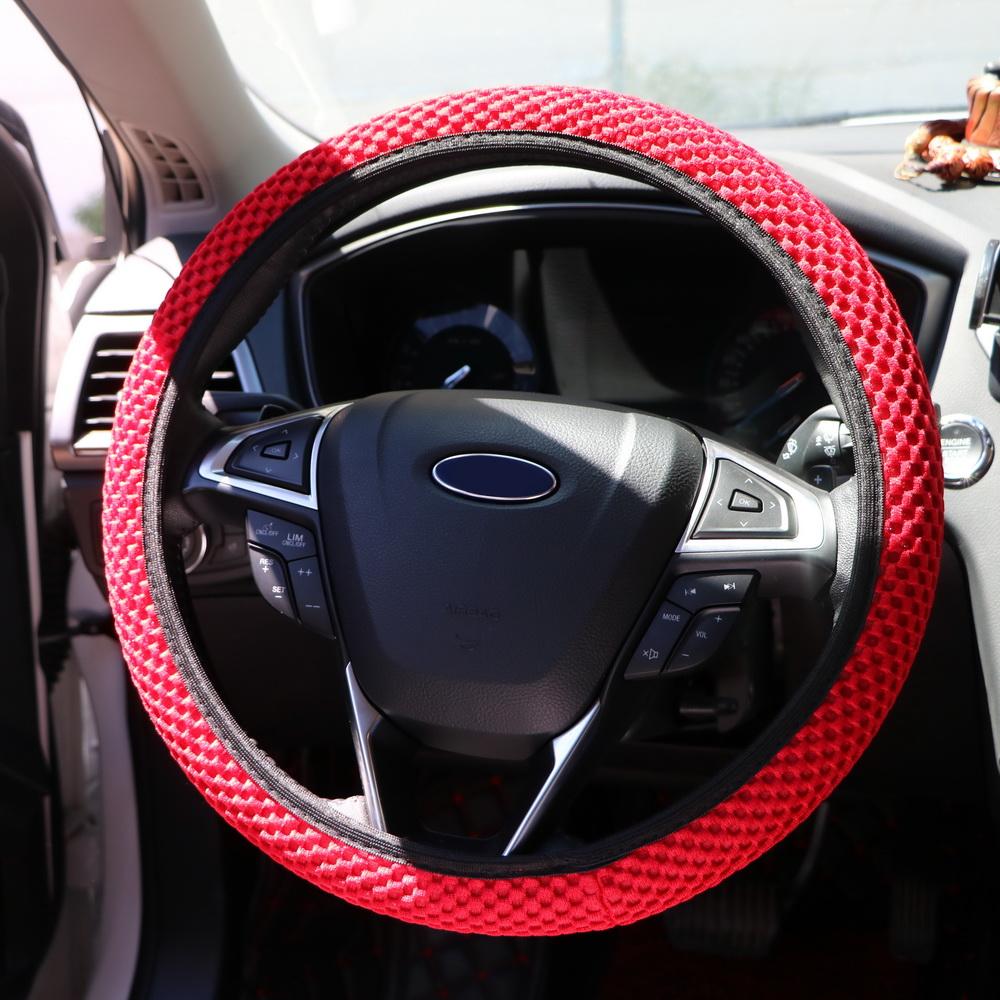
As the sun heats up, so do the unfriendly UV rays that are out to get your car. The vinyl, plastics, rubber and leather that make up your vehicle’s interiors are all susceptible to premature ageing as a result of UV exposure, leaving your plastics looking greyed out and making your leather crack and feel dry. Thankfully, you will find a wide variety of interior protectants and leather conditioners to help keep your interior surfaces protected from the elements to make your vehicle’s cabin looks fresher for longer.
Park in a shady area
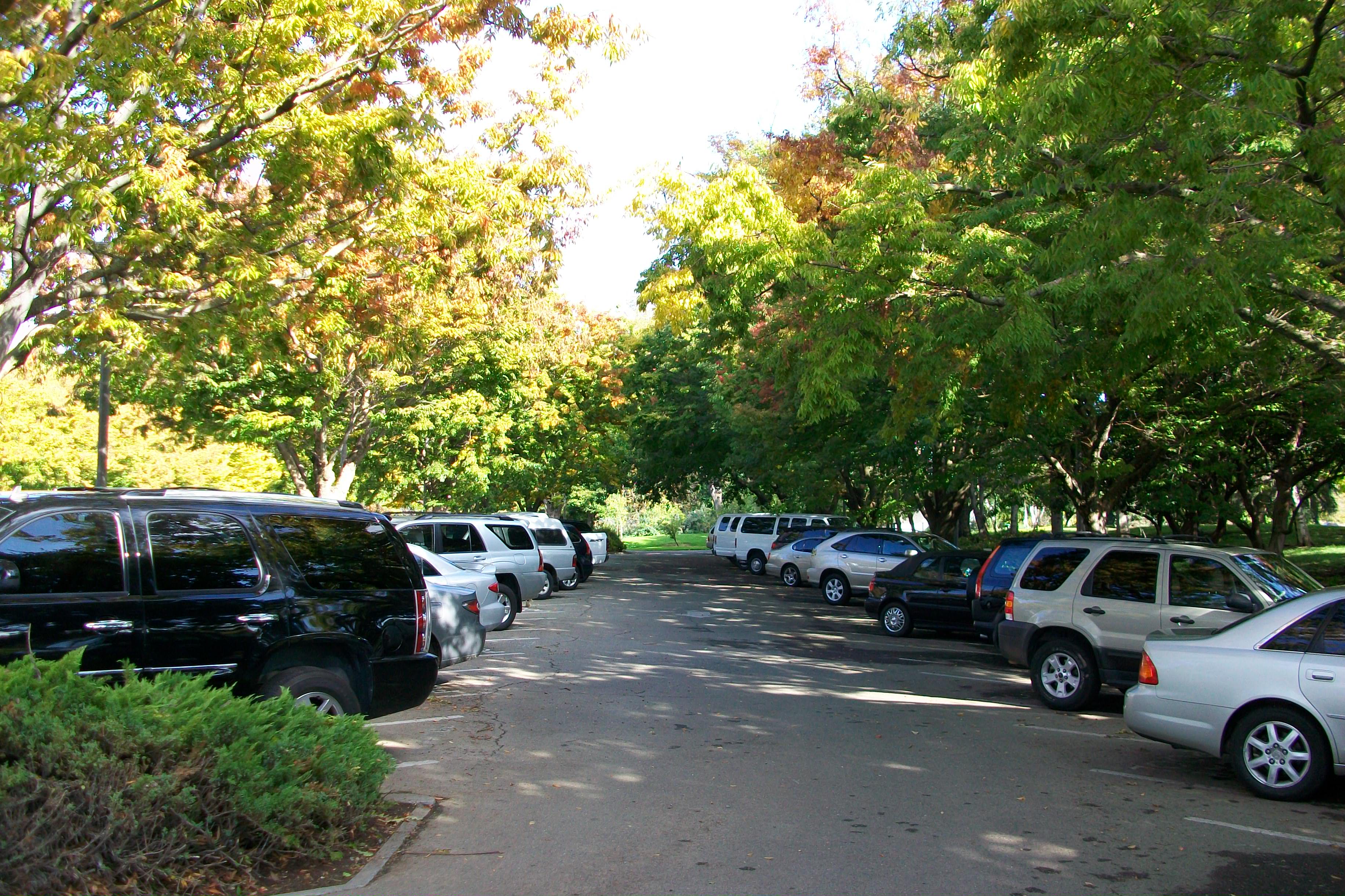
A rarity in Kathmandu but whenever possible, park in a shady area, at a garage or under a tree maybe. The bird excrements might be hard to clean but your car will thank you for it. If you’re going to be somewhere for an extended period of time, it’s worth it to walk a bit in order to park in the shade. You’ll be happy to enter a not-so-hot car when you return from your day out.
Keep your precious possessions out of the sun
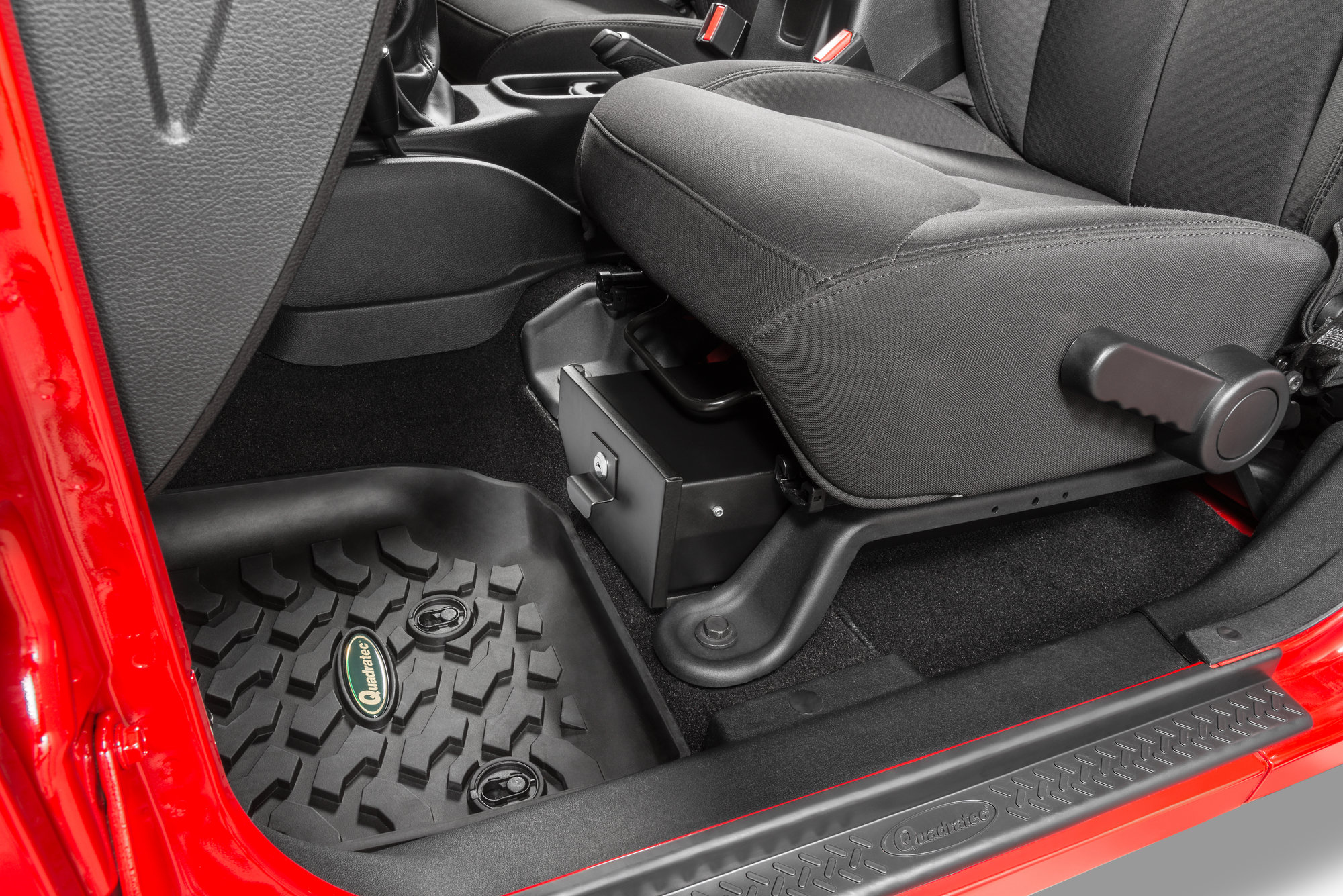
Any type of food, CDs or delicate items that you keep in your car should be stored out of the path of direct sunlight. Try storing them underneath the seat. You can also throw a blanket over your precious possessions. If you can’t find a place in your car that will conceal heat-sensitive goods, consider placing them in the boot.
Keep windows slightly opened
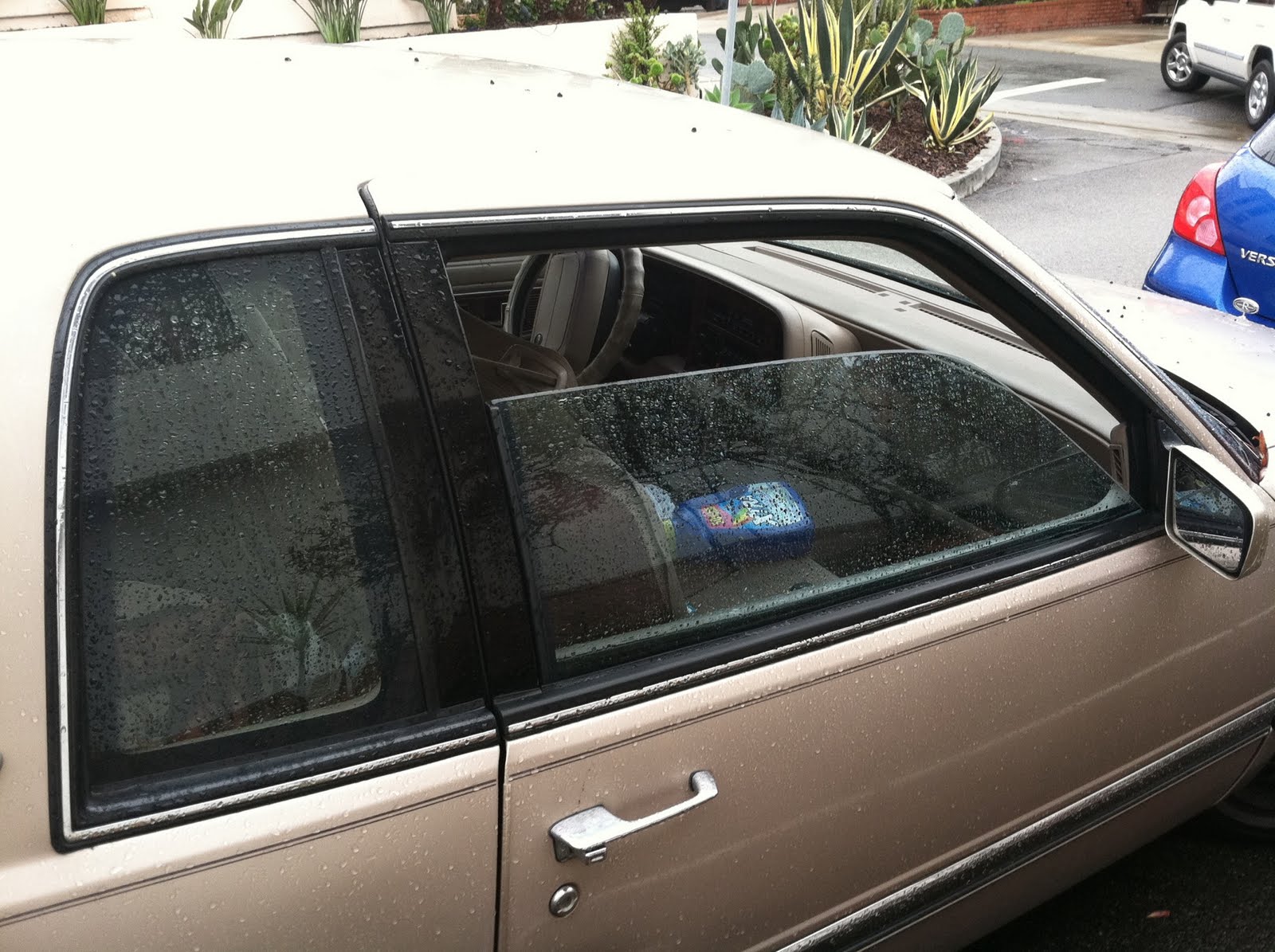
While you should not leave your windows open all the way, it is a good idea to leave them slightly open. Check to be sure that you can’t fit your arm through the crack in your window. Even a small crack will promote ventilation and help to keep your car cool.
Occasional exterior wax job
The heat will wear out the cladding and other plastic bits on the exterior of your car. To prevent this, when you’re giving your car a wash, wax and polish, be sure to use a good wax for your claddings to keep your vehicle’s exterior plastics looking new as well as to protect them from UV radiation. Being made of rubber, your tires also need similar treatment from a tire cleaner to keep from cracking, ageing and make them shiny black for days.
Harley Davidson Sportster Iron 883: The American badass
Name one motorcycle brand that has dominated pop culture more than Harley Davidson and we’ll eat our own shoe. Whether it’s the Terminator on a Fat Boy chasing down and rescuing John Connor in the LA River, Captain America riding the Street 750, or Mr. Bean getting the finger from a Harley-riding bearded biker, no motorcycle compares to the stardom Harley Davidson commands. We grew up seeing it in the silver screens and rushing to get glimpses of the ex-Crown Prince thundering through the streets. So, when Harley Davidson officially came to Nepal, we were over the moon. We were even happier when they offered us the opportunity to test-ride the Harley Davidson Iron 883. So, we got our boots and gloves and headed out in search of our own moment of badassery with the American Badass.
Rs. 4,585,000 Price of Harley Davidson
The Iron 883 is a superbly handsome motorcycle that is a certified head turner in the streets of Nepal
The Sportster Iron 883 is not your regular Harley Davidson.
It is not the sort of ostentatious motorcycle that comes to mind when you think of a Harley. Instead, it’s a more stripped down version that is part cruiser and part retro sport bike. It is an all-black affair with the Iron 883, with very little use of chrome. At the heart of the beast is a massive black powder-coated 883cc engine with black rocker covers (valve covers). A round air-filter cover sits on top of where the V-engine converges and black exhausts beautifully adorn the right profile.
The low solo seat, only 760mm off the ground, combines modern comfort with an authentic “tuck and roll” design inspired by the early days of the Bobber. Once seated you will find yourself in a forward, aggressive riding position holding onto low-rise drag-styled handle bars. You also get handlebar-mounted electronic speedometer with odometer, time-of-day clock, dual tripmeter, low fuel warning light, low oil pressure light, engine diagnostics readout, and LED indicator lights. The Iron 883 gets self-cancelling indicators with a button on each bar. It took a while to get used to, but they seem to work pretty well.
You aren’t seated in a position where your arms and legs are strenuously outstretched in front of you. Instead the foot-pegs are placed closer to the middle of the bike for a more natural riding position.
The Iron 883 runs on black nine-spoked wheels with a mechanical look machined into the spokes. Like all Harleys, the Iron 883 is belt driven which is very peculiar in the Nepali motorcycling fraternity.
In fact, the Harley Davidson Sportster Iron 883 easily stands out in the Nepali auto industry.
And if you can’t see the difference you will surely hear it.
You don’t have to stick the key in the ignition, just make sure you carefully stow it away in your pocket. The Iron 883 will sense your presence and you can simply press the ignition to bring the 883cc air-cooled engine rumbling to life.
The gorgeous beast draws dynamism from the Evolution V-twin 883 cc air-cooled engine that sits in a bare-bone chassis and generates 50 BHP @ 5,500 rpm worth of maximum power along with 70 Nm of peak torque at 3,500 rpm. All these numbers translate to a tremendous time on the saddle. As mentioned earlier, the natural ergonomics go a long way in accentuating the riding experience.
People who consider this Sportster Iron 883 a strict cruiser are missing half the fun. Yes, it most likely is the best cruiser on two wheels in the country, but the narrow and torquey Iron 883 is a phenomenal worker in city traffic too. The suspension works shockingly well on beat-up urban streets, until you exceed the rear shocks’ travel. However, if you’re headed for a sizeable pothole, prepare for a hard hit.
For a motorcycle that weighs 256kgs, the Iron 883 takes corners surprisingly well. The ground clearance comes in at 140mm and some of the shoddily made speedbumps will not sit well with this cruiser.
Braking duties are undertaken by a single front disc and 260mm rear discs. They might not be the best brakes we’ve come across but that’s possibly because of the machine’s cruiser geometry. There isn’t the same sense of weight transferal to the front that other bikes give you under braking. Nevertheless, they are decent enough for your daily jaunts.
We have very few complaints.
It isn’t every day that you get to ride a Harley in Nepal. The Harley Davidson Sportster Iron 883 is a great entry level Harley Davidson. It isn’t overbearing or intimidating and neither is it confined to cruising. For a Harley Davidson motorcycle, the Iron 883 does a tremendous job of balancing its responsibilities as an amazing cruiser and a decent city companion.
The Iron 883 is a superbly handsome motorcycle that is a certified head turner in the streets of Nepal. The bobbed fenders, side-mounted license plate, comfortable tuck-and-roll solo seat, machined highlights, and seemingly massive engine all instill pride of ownership. And that is a major allure of owning a Harley Davidson, the pride and joy that comes with it. Albeit, all that comes at a pretty hefty price tag of Rs 4,585,000.
We suggest you start saving a considerable portion of your salary for the purchase, immediately. If shelling out that kind of money is not for you, we’re pretty certain you’ll get to see Anmol KC riding it in his next movie.
All-new Hyundai Santro: A good first pick
After being discontinued in 2014, the Santro moniker has made a comeback with a new tag line: “The perfect first car”. And in this review we’re evaluating it on a clean slate. We will not give it the unfair advantage of a piggyback ride on the success of the old Santro, nor are we going to hound it to live up to the former’s legacy. This is going to be a comprehensive and impartial review of the new-gen Hyundai Santro. So, can the new Santro hold its own without the leverage of its past success?
Exterior
When you first look at the Hyundai Santro, it looks like your run-of-the-mill car targeted for the budget buyer, but with certain styling flairs that help it stand out in the segment. Surprisingly, Hyundai have foregone the iconic tall boy structure, opting instead to give it a stance more akin to the Hyundai Grand i10 with which it shares the K1 platform.
Some of the design elements integrated by Hyundai into the new Santro are stylish as well as functional. The front fascia houses the Hyundai’s cascading grille, which cools the engine, sits wide across the face and encompasses the fog lamps. Angular, swept-back headlamps are mounted high up on either side of the grille.
On the profile you will notice that the shoulder line dips down on the rear door to give extra glass area as well as an element of style. Additional design element on the profile of the new Santro comes in the form of boomerang creases over the front-wheel arch. The tail of the Santro gets a pair of simple tail lights and functionally wide-rear windshield. Overall, the exterior is well put together and gives the Santro a premium feel. However, that is only half the battle.
Interior
It’s when you step inside that the Santro truly begins to impress. For what is segmented as a budget car, the new Hyundai Santro is pretty well specced out. They have managed to maintain an air of quality in the cabin. It gets dual tone beige-and-black dashboard (with an option of all black) with smoothly functioning 7.0-inch touchscreen infotainment system loaded with Apple CarPlay and Android Auto, sitting in the center.
The infotainment screen doubles as a reversing camera in the top-spec Asta variants. There’s also a detailed MID, displaying useful information like average fuel economy, average speed and distance to empty. The sporty looking side air-vents that resemble those seen on some Mercedes models further help it achieve the upmarket appeal.
Apart from the headroom, all other dimensions are increased from its predecessor. The front seats are comfortable, but the lack of seat height and steering height adjustment mean that it isn’t the best place to be for tall individuals. Rear passengers fare slightly better with plenty of shoulder room and tremendous under-thigh support, not to mention segment first rear aircon vents. The air-con itself is possibly the best in class and chills the cabin rapidly, despite the huge glass area.
Performance
The same 1.1 liter Epsilon engine (G4HG) from the old Santro Xing and in the original i10 finds its way into the new-generation platform of the new Santro. The motor makes 69hp and 99Nm of torque which are competitive stats in the segment. Where it excels most opposition is in terms of refinement with little to no vibrations whether it is idle or on the move.
The engine responds well to your inputs and performs best when it’s in the mid-range. Gear shifts are slick and easy thanks to the light clutch; this makes life in stop-and-go traffic much easier.
It is not a rev-happy engine and feels a little stressed when pushed upwards of 5,000rpm, but the power comes in at 1000rpm and remains strong throughout the mid-range. With its ability to soak up road undulations with ease, the Santro scores high in terms of ride comfort. Nevertheless, sharp bumps do seep through to the occupants of the vehicle. It can also take on corners with comparative ease. Steering is light and easy to maneuver, with decent feedback. You will not run into trouble around tight traffic.
Verdict
The new Hyundai Santro is a decent car for the segment. It gets many things right and very few things wrong. While there are plenty of cost cuts, you still feel like you’re driving a car made for a different class.
Segment firsts like the rear aircon vent and rear parking camera definitely take the Santro high up on the potential purchase list. Overall, the new Santro is a great new car and manages to punch above its weight. It is a very good first car, exceptionally good in many.
Car safety techs: Chapter 2
When you’re behind the wheel, you are responsible for the safety of yourself, your vehicle and the people around you. While that may seem daunting, you won’t have to shoulder all the safety burden yourself. There are plenty of safety features to take on that responsibility for you. Here are some.
Adaptive Cruise Control (ACC)
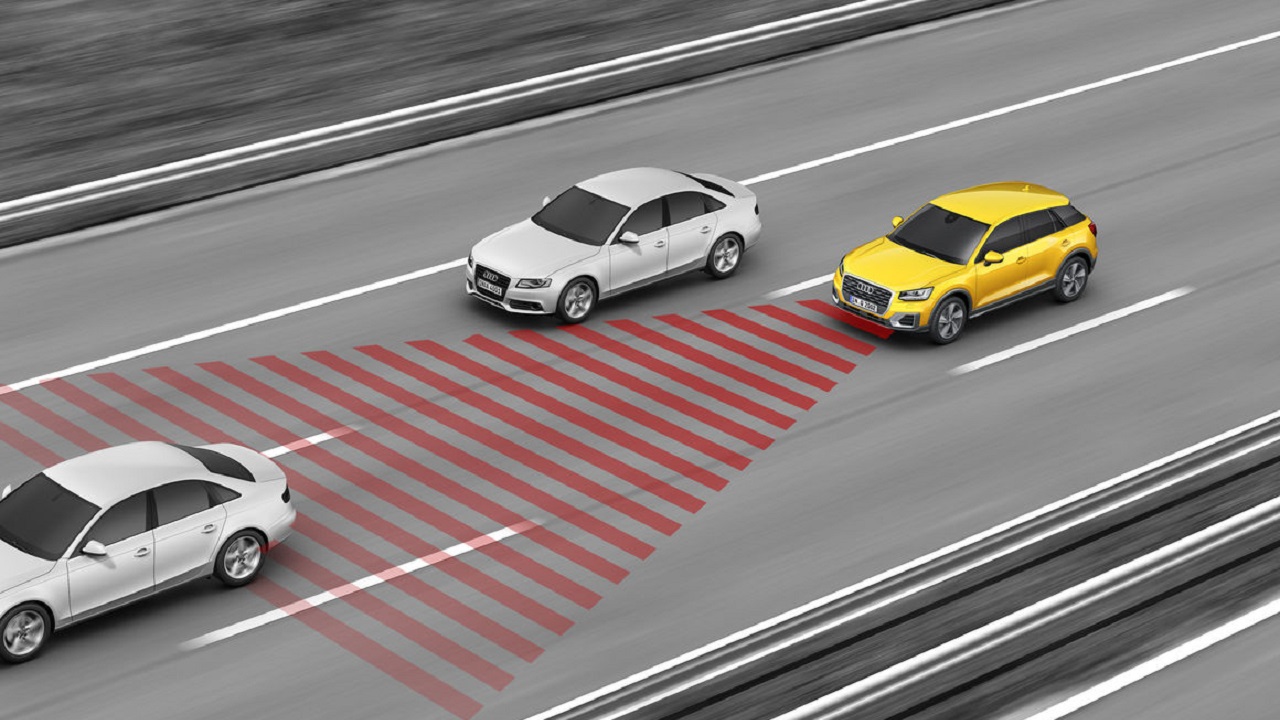
Available on the majority of high end cars today, this system uses sensors and radar, normally mounted inside the grille, to lock onto the car ahead and maintain a safe distance by automatically applying the throttle when acceleration is required and the brakes when traffic starts to slow down. ACC is mostly used by drivers on long highway cruises.
Automatic Emergency Braking (AEB)
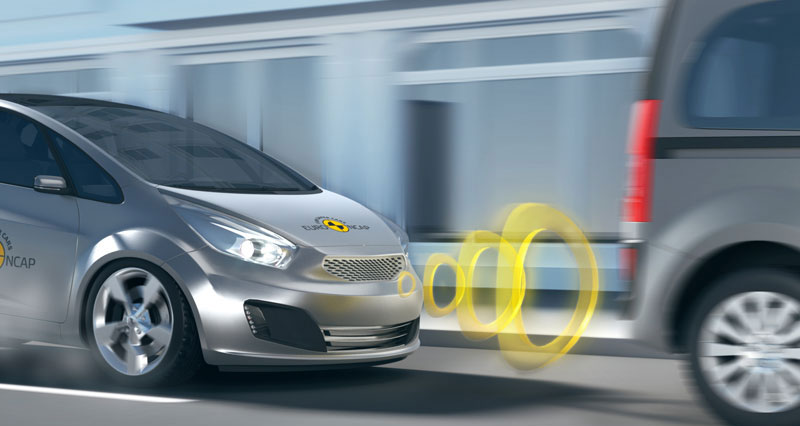
This is a feature that is growing more and more important. As late night drivers tend to fall asleep behind the wheel, or if you lose control of your car and cannot react on time, this feature is a life saver. If a car fitted with AEB senses a potential collision, and the driver does not react on time, then the car will start braking for you. The AEB is much faster than a human while reacting to emergency situations. The brakes are already applied before the driver hits the pedal.
Lane Departure Warning/Lane Keep Assist
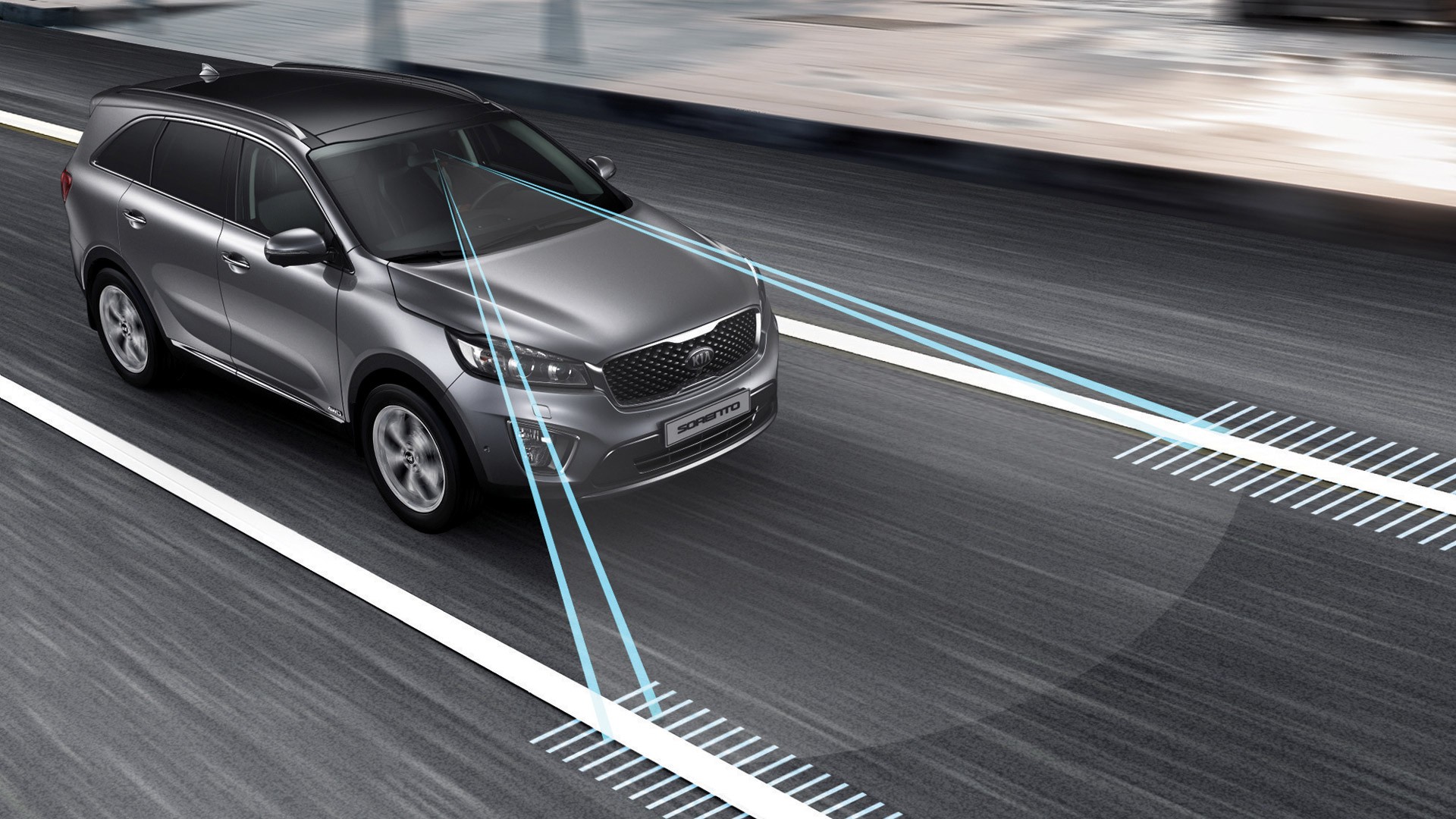
These are actually two different systems but often portrayed as one as they both work to keep you in your lane. Lane departure sounds a warning or buzzes your seat or steering wheel to inform that you are crossing the white lines or unintentionally leaving your lane. Lane Keep Assist, meanwhile, will gently steer you back into your lane if you drift out of it. When lines are faint like on our roads or the system has trouble detecting lines, the system can be switched off.
Blind Spot Detection
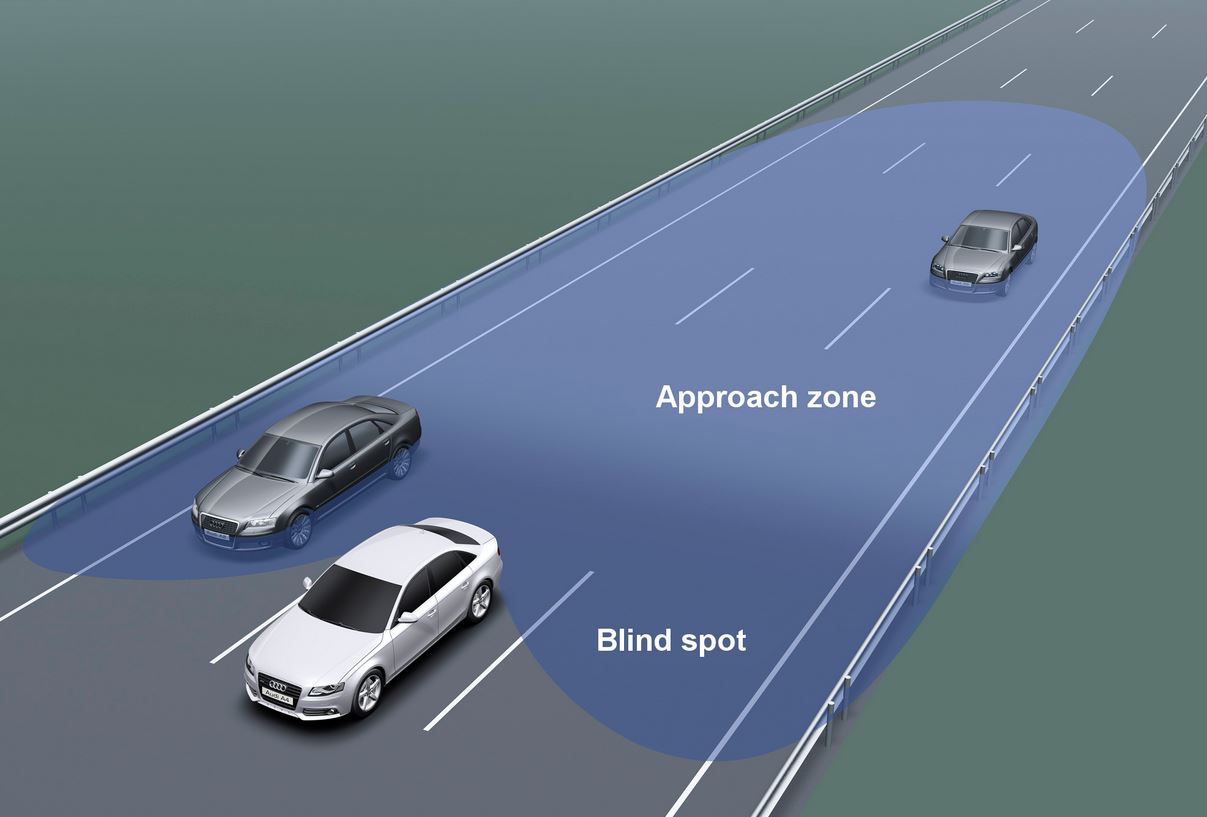
In driver education, remember how you were told to look over your shoulder and use your mirrors to see what was behind you and in your blind spot? While most drivers do not look twice to see what’s on their blind spot before making a turn to what might be an accident, the Blind Spot Detection warns you when there are vehicles approaching from the rear by shining small orange or yellow lights in your door mirrors.
Forward-Collision Warning (FCW)
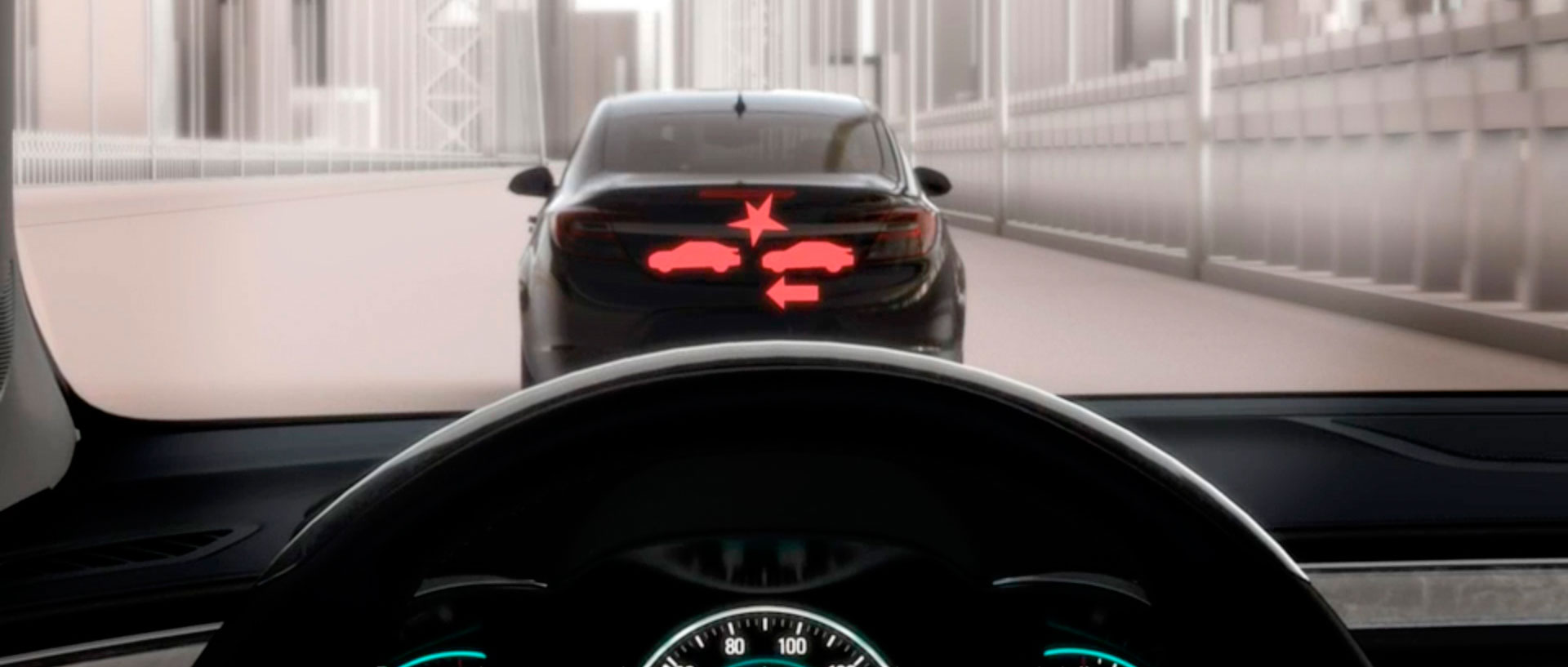
Forward-collision warning is a simple but important safety system. It uses cameras, radar or laser combination to scan for cars ahead and alert the driver if they are approaching a vehicle in their lane too fast and a crash is imminent. Most systems alert the driver with some sort of visual or audible signal to a potential crash, allowing time for the driver to react.
Pedestrian detection
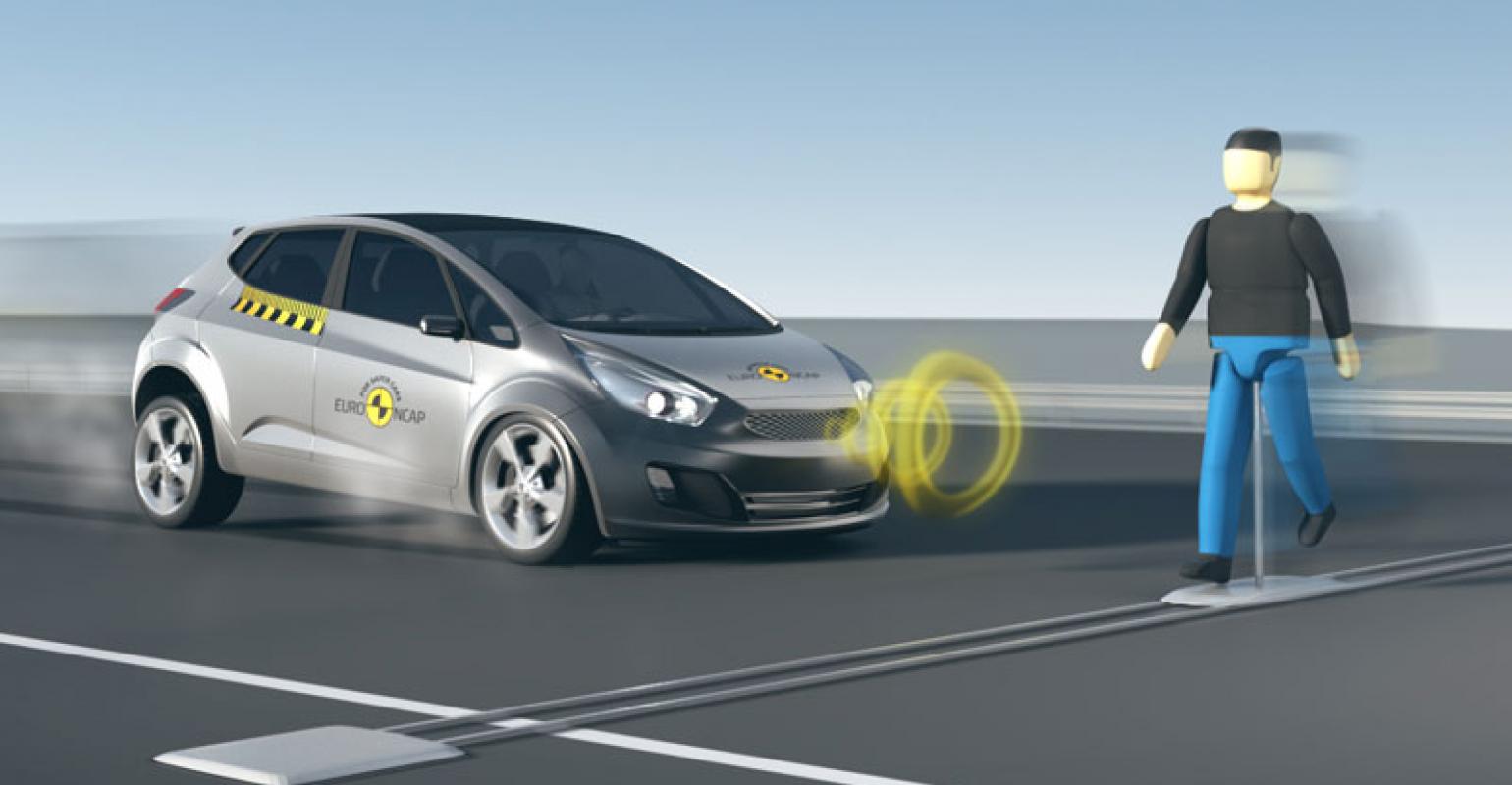
While the safety of you and your car is important, the safety of pedestrians on the road is crucial. One wrong move and you will not only wreck your car and yourself but may also put the life of an innocent bystander at risk. To prevent this you have Pedestrian Detection. This system uses the features of forward collision warning and automatic emergency braking to protect pedestrians. The vehicle’s camera(s) or radars are looking for a pedestrian in the vehicle’s path. Some systems will alert the driver with an audible or visual alert and some will even start automatic emergency braking if there is a high risk of a collision
Also read:
Car Safety Techs Explained: Chapter 1
Every car buyer asks many questions while buying a car. Does it look good? Is it premium on the inside? How many features does it have? Is the engine powerful? How much mileage does it give? ... But they rarely ask the most important question of them all... Is it safe? Safety features in a car can very well save you from what could be a fatal accident. While there's more to safety than just airbags and seatbelts. Here's a few important ones to note in the first chapter.

Anti-lock Braking System (ABS), operates by preventing the wheels from locking up during braking, thereby maintaining tractive contact with the road surface. ABS operates at a much faster rate and more effectively than most drivers could manage. With ABS, sensors mounted at each wheel monitor the speed at which the wheels are turning. If one is turning slower than the others during braking, that indicates it is locking up, which could cause skidding and loss of steering control. ABS is supposed to intervene by rapidly “pumping” the brakes at the wheel that is locking up, allowing it to spin so that the driver retains braking and steering control.

Electronic Brakeforce Distribution (EBD), is an automobile brake technology that automatically varies the amount of force applied to each of a vehicle's wheels, based on road conditions, speed, loading, etc. Always coupled with anti-lock braking systems (ABS), EBD can apply more or less braking pressure to each wheel in order to maximize stopping power whilst maintaining vehicular control.Typically, the front end carries the most weight and EBD distributes less braking pressure to the rear brakes so the rear brakes do not lock up and cause a skid.

Electronic Stability Control (ESC), is a computerized technology that improves a vehicle's stability by detecting and reducing loss of traction. When ESC detects loss of steering control, it automatically applies the brakes to help "steer" the vehicle where the driver intends to go. Braking is automatically applied to wheels individually, such as the outer front wheel to counter oversteer, or the inner rear wheel to counter understeer. Some ESC systems also reduce engine power until control is regained. ESC does not improve a vehicle's cornering performance; instead, it helps to minimize the loss of control.
Traction Control System (TCS), is typically (but not necessarily) a secondary function of the electronic stability control (ESC) on production motor vehicles, designed to prevent loss of traction of driven road wheels. TCS is activated when throttle input and engine torque are mismatched to road surface conditions. Traction control helps limit tire slip in acceleration on slippery surfaces. Many people mistakenly believe that traction control will prevent their vehicle from getting stuck. This couldn't be further from the truth. Traction control does not have the ability to increase traction; it just attempts to prevent a vehicle's wheels from spinning.

Hill Start Assist Control (HAC), is a safety technology feature that helps support vehicles when driving on steep slopes. When a heavy vehicle comes upon an especially steep hill all of a sudden, the vehicle can begin to slip backwards. The same can be said for vehicles coming to a hill that is in bad weather conditions, from snow or rain and other similar hazards. HAC is there to prevent your vehicle from rolling backwards. It does this by taking control of the pressure applied to brake fluid as you move your foot from the brake to the gas. In other words, imagine you have been stopped on a steep hill because of a traffic jam. When it’s time to go again, you have to take your foot off the brake and onto the gas, so for a second or two the vehicle is neither being stopped nor propelled forward, and thus it could begin to slide backwards. HAC prevents this from happening.

Hill descent control (HDC), is a car safety feature that’s designed to facilitate safe travel down steep grades. The feature is primarily intended for use in rough terrain, but it can be used whenever a driver wants to descend slowly down a steep hill. Unlike cruise control, which typically only works above a certain speed, hill descent control systems are usually designed so that they can only be activated if the vehicle is moving slower than 30 kph. The specifics vary from one automaker to the next, but it is generally a low-speed technology.
The way hill descent control works is very similar to the way that traction control and electronic stability control work. Just like those systems, HDC can interface with the ABS hardware and pulse the brakes without any input from the driver. Each wheel can be independently controlled in this manner, which allows the hill descent control system to maintain traction by locking up or releasing individual wheels as the need arises.
Cleveland Cyclewerks Ace Scrambler: No long-term relationship
There is a new motorcycle on the roads of Nepal and it goes by the name of Cleveland CycleWerks, and yes, that is how you spell it. The company, with its headquarters in Cleveland, Ohio, was started by Scott Colosimo and Jarrod Streng in 2009, even as all the manufacturing takes places in good ol’China. It may be new to Nepal but Cleveland CycleWerks already sell their motorcycles in 23 countries globally. Currently featured in their roster are the Ace Scrambler, Misfit, FXR, and the Ace Deluxe. There is a potential for more additions in this lineup, which includes a possible custom bobber—quiet an exciting prospect for motorcycle enthusiasts in Nepal. At the moment, we have with us the Cleveland CycleWerks Ace Scrambler; and in this review we get to decide whether it leans more towards its American retro-urban styling heritage or gives in to the shoddy make of its Chinese manufacturers. The new kid in the block has plenty to prove.
Design
Adopting a design styling that finds a balance between retro and urban, the Ace Scrambler, from afar, is a good-looking motorcycle. You do get a feel of the scrambler heritage that harks back to classic styling elements like the rounded fuel tanks with knee pads, low seat height, round headlights, and classic muffler.
However, on closer inspection, you realize that the Ace Scrambler is not going to be winning any awards for quality build. The fit and finish is adequate at best. Sit on the saddle and the first thing that stick out like sore thumbs are the shoddy dual dials. It appears that the designers at Cleveland CycleWerks slipped a painted visiting card in place of the speedo dials and forgot to replace it before the motorcycles were rolled out for sales.
But if you can overlook these flaws the Ace Scrambler is a good motorcycle to look at and embodies the text book scrambler feel with elements like the seat upholstery, knobby tires, a circular tail light, and headlamps. The Cleveland CycleWerks plate on the side is a nice touch. Massive single caliper discs up front give it a masculine appeal while the dual shocks in the rear maintain the classic appeal.
Performance
If you want to really get into the retro-urban feel, you can opt to kick-start the 229cc OHV single cylinder engine into life. You may not get a thundering rumble but you do get a decent enough noise to get things rolling. Clunk it into gear and it’ll bring all 15 horses in the engine to life, spurred on by 16Nm of torque. While you might not be clocking any lap records in the Ace Scrambler it is a fairly spirited motorcycle.
The suspension setup, though, was very soft and the Ace Scrambler bottomed out on intermediate to large road undulations. Slightly stiffening up the suspension could be a good idea.
Vibrations do tend to creep in at higher revs, and the knobby tires are not the best fit for the tarmac. They do, however, do a good job once you’re off the asphalt.
You don’t get a lot of fancy frills with Ace Scrambler, and on a scrambler made for some roughhousing, it is not a gaping fault. It does mean that there is no ABS, but the 300 mm discs up front and the 210 mm discs in the rear do a good job of bringing the machine to a stop.
Overall, the Ace Scrambler is a mediocre motorcycle to get you around town and maybe for a short highway run. But you’re probably better off with something else if you plan on doing long hauls regularly.
Verdict
The Cleveland Cyclewerks Ace Scrambler is a head turner and will get you noticed on the roads. For young guns who want to get started on a motorcycle that looks good and will get you from one place to another, this machine gets the job done. We are certain fresh graduates looking to go abroad would find this a good mode of transport until they leave.
As a long-term companion though, it might not be the perfect partner. On the bright side, there is plenty of potential for modifications and personalization on the Cleveland Cyclewerks Ace Scrambler. However, because modifying your motorcycles is against the laws of Nepal we cannot advise anyone to tweak these machines.














